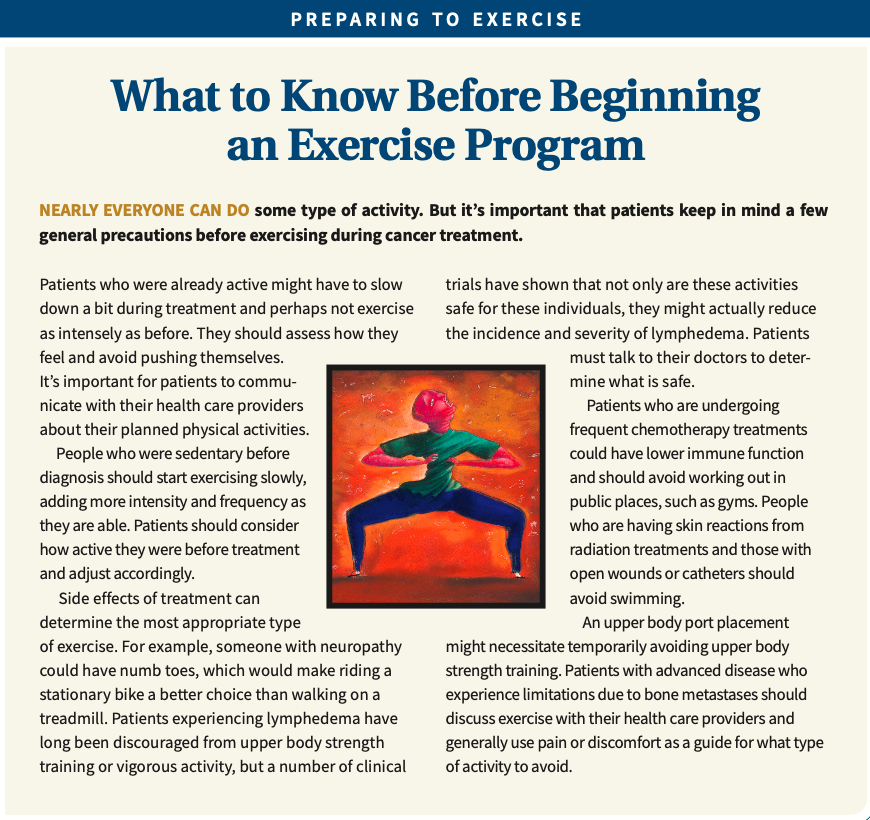Article
Staying Active During Cancer Treatment
Exercising during cancer treatment can give patients a boost.
Many patients wonder if they can — or should — exercise during cancer treatment. In a recent report by the American Cancer Society, a group of experts in nutrition, physical activity and cancer survivorship evaluated the scientific evidence and concluded that exercise is not only safe during cancer treatment, but also can improve quality of life in many ways. An American College of Sports Medicine roundtable on exercise guidelines for cancer survivors also concluded that exercise during cancer treatment is safe and can improve physical functioning, quality of life and cancer-related fatigue. In fact, for those living disease-free or with stable disease, physical activity might even help prolong life.
The bottom line: Avoid inactivity. Experts say any kind of activity helps. Studies show a significant benefit from simply walking three to five hours a week at an average pace. Walking is easy, cost-free and can be done just about any time, anywhere. Patients should use good judgment when beginning or continuing to exercise, make sure to warm up and stretch, and always discuss their plans with their doctors before starting.
MENTAL BENEFITS
Some of the most important benefits of activity can be psychological. Being active offers a sense of self-control and helps with body image, self-esteem, anxiety and depression during treatment. Because exercise boosts endorphins, it’s recommended for healthy people who have mild to moderate depression and is known to decrease mild depression. It has the same effect in those undergoing cancer treatment.
PHYSICAL BENEFITS
Exercise conveys a range of physical benefits, too. It helps combat fatigue, control weight gain and could help reduce the chance of recurrence of certain cancers. Other side effects of treatment that could be favorably influenced by exercise include nausea, deconditioning of the heart and lungs and loss of muscle mass and bone strength. Studies show that exercise could help reduce the overall risk for breast, colon and other types of cancer, too. To learn more about how exercise can help, visit the American Cancer Society’s website at cancer.org/ healthy/eat-healthy-get-active.html.

OVERCOMING BARRIERS
While there are plenty of reasons to exercise, some patients might need guidance and motivation in the beginning if exercising is new.
One challenge is learning how to deal with treatment-related physical limitations. Talk to your care team about physical fitness programs that will fit in best with your overall treatment plan.